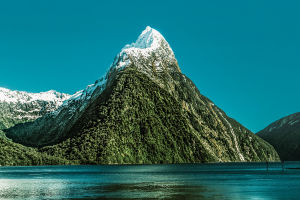Many iconic locations come to mind when it comes to breathtaking starry skies.
While places like Yangmingshan or the recently established "Hohhuan Mountain International Dark Sky Park" may spark interest, none can quite compare to the unparalleled beauty of the Antarctic continent's starlit expanse.
Researchers worldwide have dubbed it the "highest quality starry sky on the earth's surface."
For professional astronomers, determining the quality of observation conditions is paramount to conducting accurate research. The Antarctic sky offers several unique advantages that make it an ideal location for astronomical observation.
To begin with, minimizing interference from light pollution, atmospheric disturbance, and adverse weather conditions is essential for successful observations. Light pollution, a significant hindrance to astronomical research, is virtually non-existent in Antarctica.
Unlike urban areas, industrial zones, and regions with excessive artificial lighting, Antarctica's remote location ensures minimal light pollution. As a result, astronomers can enjoy crystal-clear views of celestial objects without man-made light interference.
Another crucial factor in assessing observation conditions is atmospheric disturbance. This phenomenon, characterized by fluctuations in the atmosphere, can distort celestial images and affect data quality.
Comparable to the twinkling of stars in the children's song "Twinkle, Twinkle, Little Star," atmospheric disturbance can hinder high-magnification telescope observations, making celestial bodies appear as though they are submerged in water. Antarctica's stable atmospheric conditions mitigate these disturbances, offering astronomers pristine views of the cosmos.
Antarctica's harsh climate and remote location present logistical challenges for constructing and maintaining large observatories. Unlike popular astronomical sites like Mauna Kea in Hawaii or high mountains in Chile, Antarctica's extreme conditions make it difficult to establish permanent research facilities.
However, the region's exceptional observing conditions make it a prime candidate for future astronomical research initiatives. While constructing large observatories in Antarctica may pose challenges, the continent holds immense potential for astronomical research.
In particular, areas like the South Pole, with its pristine skies and minimal human activity, offer unparalleled opportunities for scientific exploration. Although accessing the South Pole remains challenging, advancements in technology and logistical support may facilitate future research endeavors.
Antarctica's allure extends beyond traditional observatories, making it an ideal location for specialized observation programs. Projects such as Wide Field Surveys (WFS), which require high-quality sky conditions, are particularly well-suited for Antarctic environments.
As technology continues to evolve and our understanding of the universe deepens, Antarctica may indeed become a hub for astronomical research, akin to the renowned observatories in Hawaii and Chile.
The Antarctic continent boasts some of the most pristine and captivating starry skies on Earth. Its remote location, minimal light pollution, and stable atmospheric conditions make it an ideal destination for professional astronomers seeking unparalleled observation opportunities.
While challenges exist in establishing large observatories, the potential for groundbreaking discoveries and scientific advancements makes Antarctica an enticing frontier for future astronomical exploration.
On one hand, the continent's pristine skies offer unparalleled opportunities for scientific discovery, particularly in fields such as cosmology, astrophysics, and planetary science. The unique vantage point provided by Antarctica's southern hemisphere location allows astronomers to observe celestial phenomena not visible from other regions of the world.
On the other hand, the harsh climate and remote location present significant challenges for constructing and maintaining observatories. Antarctica's extreme conditions require specialized infrastructure and logistical support, which can be costly and technically demanding.


